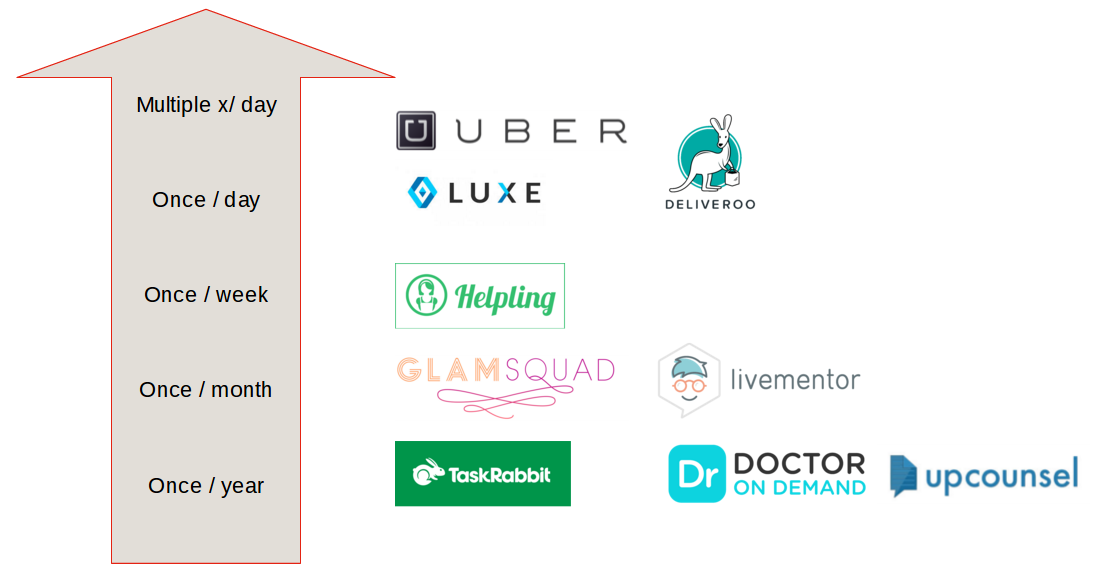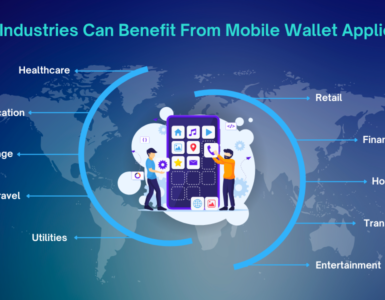These slides support a keynote I gave at Slush’s “On-Demand Everything” conference — they summarize my thoughts on the space, which I’ve narrowly defined as mobile-first marketplaces connecting consumers to professionals offering a service (ie. not a product), in less than an hour.
These companies represent the 4th generation of online marketplaces, which evolved over time from generalist, passive classifieds (Craigslist), where all the work of matching supply and demand was left to the buyers and sellers, to ever more specialized and intelligent platforms, able to offer almost perfect and instantaneous matching, requiring virtually no work from both sides of the transaction (Uber’s “click of a button” experience).

While it’s safe to assume that every service will move towards such a seamless mobile experience, the pace at which the change is occurring, and whether it will be led by a new startup vs. an incumbent, depends on a few characteristics, which vary from sector to sector.
The following questions will determine the pace of adoption and the eventual success of on-demand startups:
1. How urgent is the need?

The more urgent the need, the more transformative the on-demand model, which by definition provides a service in less than an hour. While we need a cab in the next 5 minutes, and our food to be delivered in less than 30, it’s acceptable to wait a few hours for a lawyer to review our corporate documents or a cleaner to show up at our home. However, fast is always better than slow, and consumers expectations will keep on rising to demand ever more instantaneous service.
2. How frequent is the need?

Most of us need to eat 3 times a day, clean our houses and our clothes once a week, check up with our doctor a few times per year, and move/refurbish house at most once a year. Frequency of use varies widely across categories, and services which are not used on a regular, at least weekly basis, are at a disadvantage to create a lasting bond with the customer.
This is a particularly acute challenge for mobile first/only companies, where user retention matters as much as acquisition. While more than 1.5 million apps are available, people spend 80% of their time in their top 4 apps, and only use 25 app every month on average. Which means that if we don’t have a good reason to use an app regularly, it will probably never make it to our homescreen, and we will eventually forget and uninstall it. One way to increase frequency is to bundle different services together (a la Taskrabbit, which added cleaning and delivery to its original handyman/errands proposition), which creates other challenges in terms of user experience (it’s hard to offer a one-click experience when the services offered are heterogeneous).
3. How complex is the task?

Complex tasks are harder to make fit in a simple one-click interface, and also require a highly skilled workforce (lawyers, doctors), which tends to be harder to recruit and retain at scale. Also, complex tasks tend to require a lot of direct interaction between the consumer and the supplier, which may lead to leakage away from the platform once their relationship has been established.
4. Is mobile a game-changer?

Has mobile enabled a match-making between supply and demand that wasn’t possible before? Or is it simply a more convenient interface? Using the front-facing camera to do tele-medicine is a real improvement but it isn’t enabling a radically new experience that simply wasn’t possible before. While matching in real time a passenger and a driver on the fly was not possible until virtually everyone got equipped with a GPS-enabled smartphone.
5. Can it ever be profitable?

Every on-demand startup has a different business model and hence different unit economics but they tend to face a common conundrum: the extra convenience they provide is generally more costly at first than the existing options, and hence originally targeted only at the most time poor and cash rich segment of the population, which makes it challenging to generate enough demand to fully utilize their workforce. An easy way to solve it is to price the service lower than its actual cost — hence why so many on-demand startups are gross margin negative. It is a bet that growth will be strong enough to bring sufficient VC funding, in order to keep subsidizing demand and increasing utilization rates to demonstrate that the model can eventually be operated profitably. This is obviously a dangerous game as burn rates will increase exponentially with volume, and the low pricing may hide a blunt reality that the extra convenience provided may not actually be worth the extra cost.
Original Blog Post : medium.com








Add comment